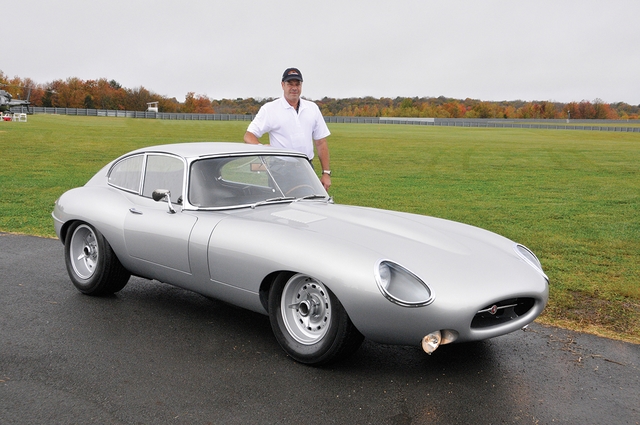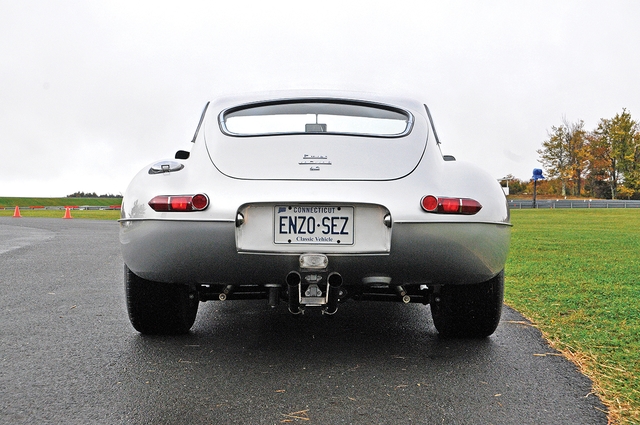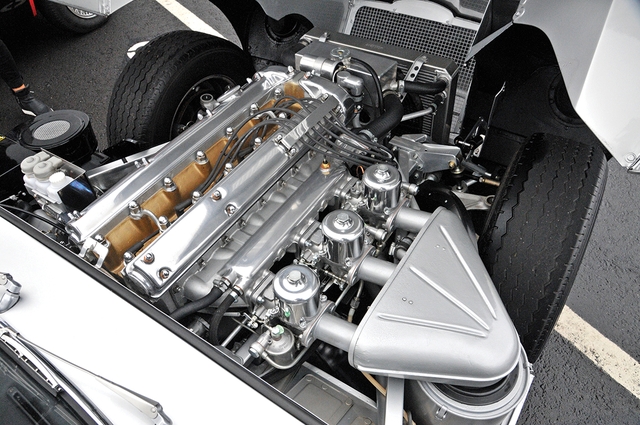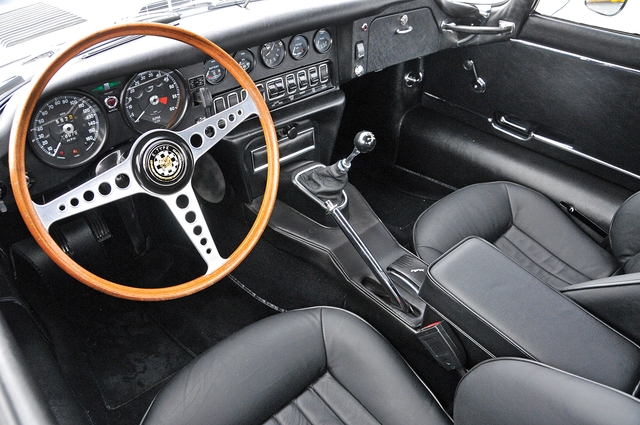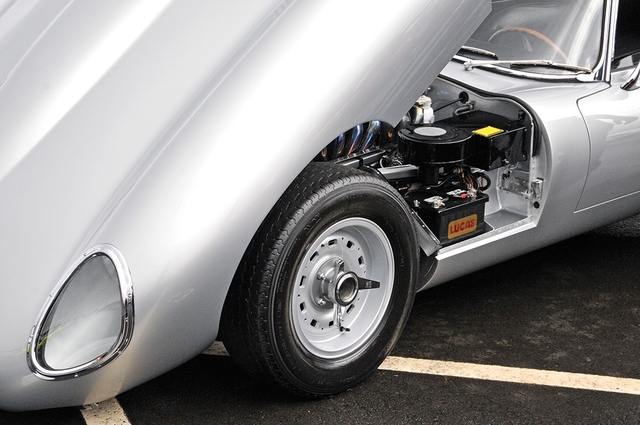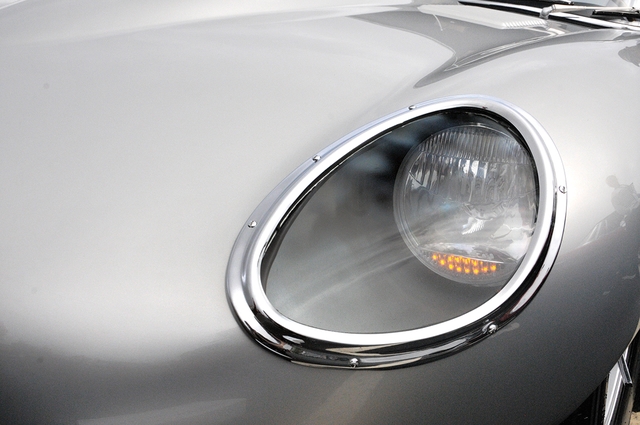What is Hip?
Thanks to Russ Rocknak for this amazing description of how Enzo Sez came into being. The article first appeared in Mesh New England, 2017. The magazine is now Wayne Carini's The Chase. THE JAGUAR E-TYPE was first unveiled at the 1961 Geneva Motor Show, and it was quite a sensation. By combining Malcolm Sayer’s cool aerodynamic design with Sir William Lyons’s intuitive styling, it was one of the most beautiful sports cars of the 1960s. The E-Type mixed high technology, sweeping beauty, and refined performance, leading Enzo Ferrari to call it “the most beautiful car ever made” upon its release.
THE JAGUAR E-TYPE was first unveiled at the 1961 Geneva Motor Show, and it was quite a sensation. By combining Malcolm Sayer’s cool aerodynamic design with Sir William Lyons’s intuitive styling, it was one of the most beautiful sports cars of the 1960s. The E-Type mixed high technology, sweeping beauty, and refined performance, leading Enzo Ferrari to call it “the most beautiful car ever made” upon its release.The E-Type’s 150 mph top speed, sub7-second zero-to-60 acceleration, monocoque construction, disc brakes, rack-and-pinion steering, and independent front and rear suspension distinguished the car and spurred industry-wide changes. The E-Type was based on Jaguar’s D-Type racing car, which won the 24 Hours of Le Mans three consecutive years beginning in 1955. It employed engineering derived directly from its racing design, with both the body tub and engine bolted directly to the frame. Available as a sleek coupe or impossibly glamorous convertible, the E-type was an instant success. Its balance of sportscar performance with everyday usability rewrote the rulebook. Autocar’s 1961 review said, “It offers what drivers have so long asked for.” Through the years, it continued to garner due attention. In 1996, New York City’s Museum of Modern Art recognized the significance of the E-Type’s design by adding a blue roadster to its permanent collection. It is one of only six automobiles to receive the distinction. In 2004, Sports Car International magazine placed the E-Type at number one on its list of the top sports cars of the 1960s. In March 2008, the Jaguar E-Type ranked first in The Daily Telegraph’s list of the 100 most beautiful cars of all time.
The Challenge
Given this hard evidence that the Jaguar EType is indeed one of the most recognized automobiles for its sheer beauty and drivability, how could you possibly modify one to wring out more of its subtle virtues? Enter Dean Cusano, president and director of service at Motorcars Incorporated of Plainville, Connecticut. Cusano is responsible for the design and execution of the 1968 Jaguar E-Type gracing these pages. The car, aptly named Enzo Sez, is the result of a two-year build that Cusano and his team completed for a client. “When my client came to me, he wasn’t really a car person but had a passion for Jaguar E-Types and was ready to own one,” says Cusano. “He never had a classic car before, and he wanted to enter through the doors of ownership with an E-Type. At that time, I had a 1968 Series 1.5 FHC [fixed-head coupe] that was original with all the patina. It had about 40,000 miles on it. I knew the car’s complete history, and I thought it was a perfect candidate for him, and he bought it.“He drove the car for about 5,000 miles and just fell in love with it. His everyday cars were Audis and newer Porsches, and he was used to always having performance on tap, without any surprises. This car allowed him to really get involved in the whole E-Type thing.
 “Then one day he came into my shop and said, ‘Dean, I want to build this E-Type into the best street-performance car possible. I really don’t know what I want, but I can tell you that I absolutely love this car and I am going to keep it for life.’ I shared with him that I always wanted to do this full-blown kind of road warrior E-Type, but in the end, it would still have to look like a Jaguar—it can’t look like a modified car. That is a slippery slope with E-Types, because they are so beautiful as they are that every time you change something you absolutely risk going backwards. It was my lifelong intention to build something like this, and it was an unbelievable opportunity to do it with someone who is just a fantastic guy, who really appreciates what we are doing here at Mototcars Incorporated, so we were on.
“Then one day he came into my shop and said, ‘Dean, I want to build this E-Type into the best street-performance car possible. I really don’t know what I want, but I can tell you that I absolutely love this car and I am going to keep it for life.’ I shared with him that I always wanted to do this full-blown kind of road warrior E-Type, but in the end, it would still have to look like a Jaguar—it can’t look like a modified car. That is a slippery slope with E-Types, because they are so beautiful as they are that every time you change something you absolutely risk going backwards. It was my lifelong intention to build something like this, and it was an unbelievable opportunity to do it with someone who is just a fantastic guy, who really appreciates what we are doing here at Mototcars Incorporated, so we were on.“It wasn’t really a project that evolved, but rather a project that I knew right from the beginning what I was going to do. We didn’t do a modification, then do another and another. We took the car completely apart, and from the engine, suspension, brakes and the body, I knew exactly what needed to be done, right down to the wheels and tires.
“When each component was completed, it all came together really well. We actually decided on the color of the car during our first meeting—as well as the Dunlop wheels (8.5 inches up front, 9.5 inches in the rear), the Avon tires, its stance and rake. We never deviated from the original plan, and a build usually never goes like that. The trick was to do it as high quality as possible and make any modifications look like the factory did it. We paid particular attention to not eliminating spot welds, and where seams weren’t meant to be perfect, they were left not quite perfect. The body lines had to look correct and not altered, and the rake and perfect tire fitment were key factors, too. I spent countless hours just looking at that car, moving it up an eighth of an inch, down a quarter of an inch, moving the wheels out an eighth of an inch. I had four different sets of tires before I found the correct size. That’s how the build went: I knew where I had to get to.
“I addition to all of this, I had such an allegiance to the original owner, who is a personal friend of mine and ultimately gave the car up to help build his family. He had so much passion for this car, too. He bought the car when he was attending the University of Connecticut in 1968, which is an interesting story unto itself. He and his roommate both decided they wanted Jaguar E-Types. They both went down to the local Jaguar dealer, and one picked out a blue one and the other picked out a burgundy one, and when it came time to get the loan papers in order, the bank required that each had a co-signer. So each co-signed the other’s application, and bin - go, off they went. True story, and he had owned the car ever since, until he sold it to me. His roommate still has his.
 “I felt that the build was for both my client and my friend. That’s where the fog lights came into the picture. The original owner really liked Ferraris and the placement of the fog lights on the 275 GTB Competition car, so he had them installed likewise on his Jaguar. I decided to keep them, even though I was a little nervous about the decision, because they aren’t exactly E-Type-ish. We incorporated them a little better than they were originally done, but they were kept as a testament to the car’s original owner. “The only thing that my client wanted that I wasn’t too crazy about was the motif bar. You would find it laughable how long it took me to get that motif bar’s size, shape, and ultimate position down. I had set it in, moved it forward, moved it back, moved it up, and moved it down, because when you are standing in front of the car and looking down at it, it’s not centered—it’s an optical illusion. It was just a difficult one for me that took a lot of fiddling, but in the end, I think it looks pretty good.
“I felt that the build was for both my client and my friend. That’s where the fog lights came into the picture. The original owner really liked Ferraris and the placement of the fog lights on the 275 GTB Competition car, so he had them installed likewise on his Jaguar. I decided to keep them, even though I was a little nervous about the decision, because they aren’t exactly E-Type-ish. We incorporated them a little better than they were originally done, but they were kept as a testament to the car’s original owner. “The only thing that my client wanted that I wasn’t too crazy about was the motif bar. You would find it laughable how long it took me to get that motif bar’s size, shape, and ultimate position down. I had set it in, moved it forward, moved it back, moved it up, and moved it down, because when you are standing in front of the car and looking down at it, it’s not centered—it’s an optical illusion. It was just a difficult one for me that took a lot of fiddling, but in the end, I think it looks pretty good.“The interior is basically stock except for the seats, which I had done so you can sit low and snug in the car with a safety harness. It was originally a radio-delete car, so we stuck with just that and left the console as original.
“We tried to keep the car’s soul and just give it a new suit. My inspiration came from the lightweight Jaguar E-Types originally built by Jaguar to go racing—all 12 were OTC [open two-seater] cars that were fitted with a hardtop. They didn’t make a lightweight version in an FHC. They did make a low-drag coupe, but it really didn’t look right to me.
“Today, when I bring the car to shows, the judges often ask what was changed on the car, as they often can’t tell what modifications were done. When asked their opinion about a certain car, often people reply with, ‘It’s really nice, but…’ With this car, I just get the ‘It’s really nice,’ with no ‘buts.’



